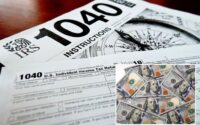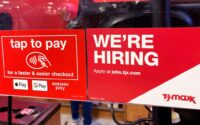Federal Reserve hikes key interest rate despite US bank chaos
The Federal Reserve hiked interest rates on Wednesday — a pivotal move that showed the central bank’s resolve to tackle inflation despite recent chaos in the US banking sector.
In a hotly anticipated decision, the rate-making Federal Open Market Committee hiked its benchmark rate by 0.25% – to a range of 4.75% to 5% – at the conclusion of the Fed’s closely-watched policy meeting.
“The U.S. banking system is sound and resilient,” the FOMC said in a statement. “Recent developments are likely to result in tighter credit conditions for households and businesses and to weigh on economic activity, hiring, and inflation.”
The tough call by the Fed — headed by chairman Jerome Powell — had been the subject of fierce debate since Silicon Valley Bank and Signature Bank of New York collapsed in the largest US bank failures since the 2008 financial crisis.
Hedge fund boss Bill Ackman and tech billionaire Elon Musk were among those calling for the Fed to pause hikes – or even cut rates – to avoid more shocks to the economy. Others, such as ex-Treasury Secretary Larry Summers, urged the Fed to stay the course and lift rates higher despite the turmoil.
The increase marked the ninth consecutive interest rate hike for the Fed during a rapid tightening of monetary policy over the last year. The Fed also hiked by a quarter percentage point at its meeting in February.
Powell and his colleagues were forced to consider the US banking sector crisis even with inflation running at 6% — well above the Fed’s 2% target.

Another interest rate hike in March was considered a foregone conclusion earlier this month after a series of hotter-than-expected economic reports.
Just days before the bank failures, Powell had warned the Fed would need to raise rates higher than previously expected to bring down prices.
While interest rate hikes are the Fed’s key inflation-fighting tool, they also increase pressure on businesses by making interest payments and forms of borrowing more expensive.

A rapid surge of interest rate hikes over the last year were a key factor in SVB’s collapse, as the tech sector’s one-time favorite lender was forced to eat a $1.8 billion loss on a fire sale of its bond holdings. A recent study found nearly 200 other banks face similar risks.
Bank stocks remained under pressure this week due to trouble at regional lender First Republic, which faced a bank run from worried depositors.

Elsewhere, UBS Group stepped in with an emergency takeover of Swiss banking giant Credit Suisse after questions emerged about its survival.
The Fed’s announcement was in line with expectations.
Ahead of the FOMC’s announcement, the market was pricing in an 86.4% probability of a quarter-point rate hike and just a 13.6% chance that the Fed would leave rates unchanged, according to CME Group’s FedWatch tool.


